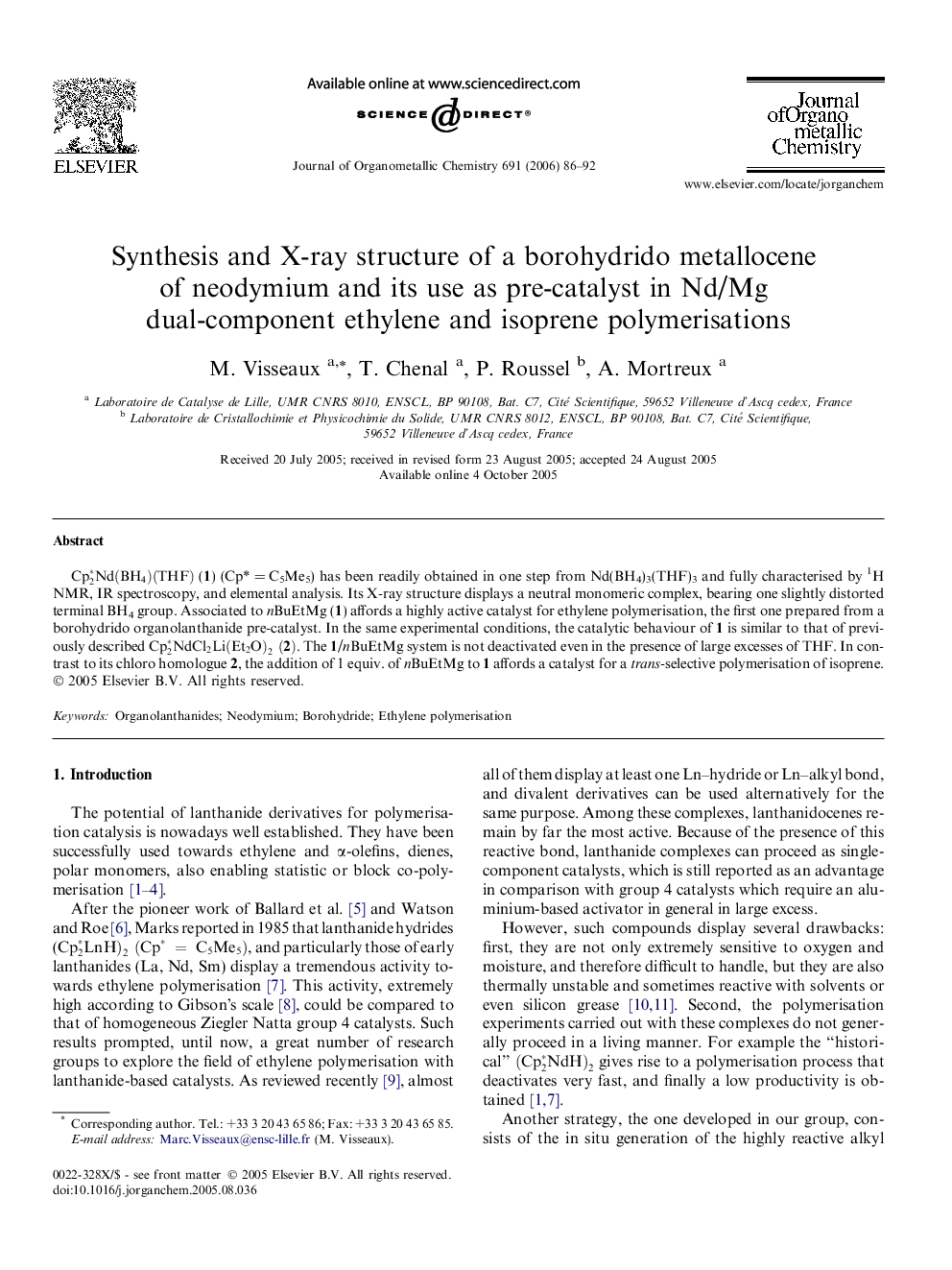| Article ID | Journal | Published Year | Pages | File Type |
|---|---|---|---|---|
| 1327717 | Journal of Organometallic Chemistry | 2006 | 7 Pages |
Cp2∗Nd(BH4)(THF) (1) (Cp* = C5Me5) has been readily obtained in one step from Nd(BH4)3(THF)3 and fully characterised by 1H NMR, IR spectroscopy, and elemental analysis. Its X-ray structure displays a neutral monomeric complex, bearing one slightly distorted terminal BH4 group. Associated to nBuEtMg (1) affords a highly active catalyst for ethylene polymerisation, the first one prepared from a borohydrido organolanthanide pre-catalyst. In the same experimental conditions, the catalytic behaviour of 1 is similar to that of previously described Cp2∗NdCl2Li(Et2O)2(2). The 1/nBuEtMg system is not deactivated even in the presence of large excesses of THF. In contrast to its chloro homologue 2, the addition of 1 equiv. of nBuEtMg to 1 affords a catalyst for a trans-selective polymerisation of isoprene.
Graphical abstractMonomeric Cp2∗NdBH4(THF) has been synthesised and fully characterised. Combined with butylethylmagnesium (BEM), it gives rise to a powerful ethylene polymerisation catalyst, the first one made of a borohydrido organolanthanide. Cp2∗NdBH4(THF)/BEM also allows isoprene polymerisation, in contrast with the corresponding chloro neodymocene.Figure optionsDownload full-size imageDownload as PowerPoint slide
